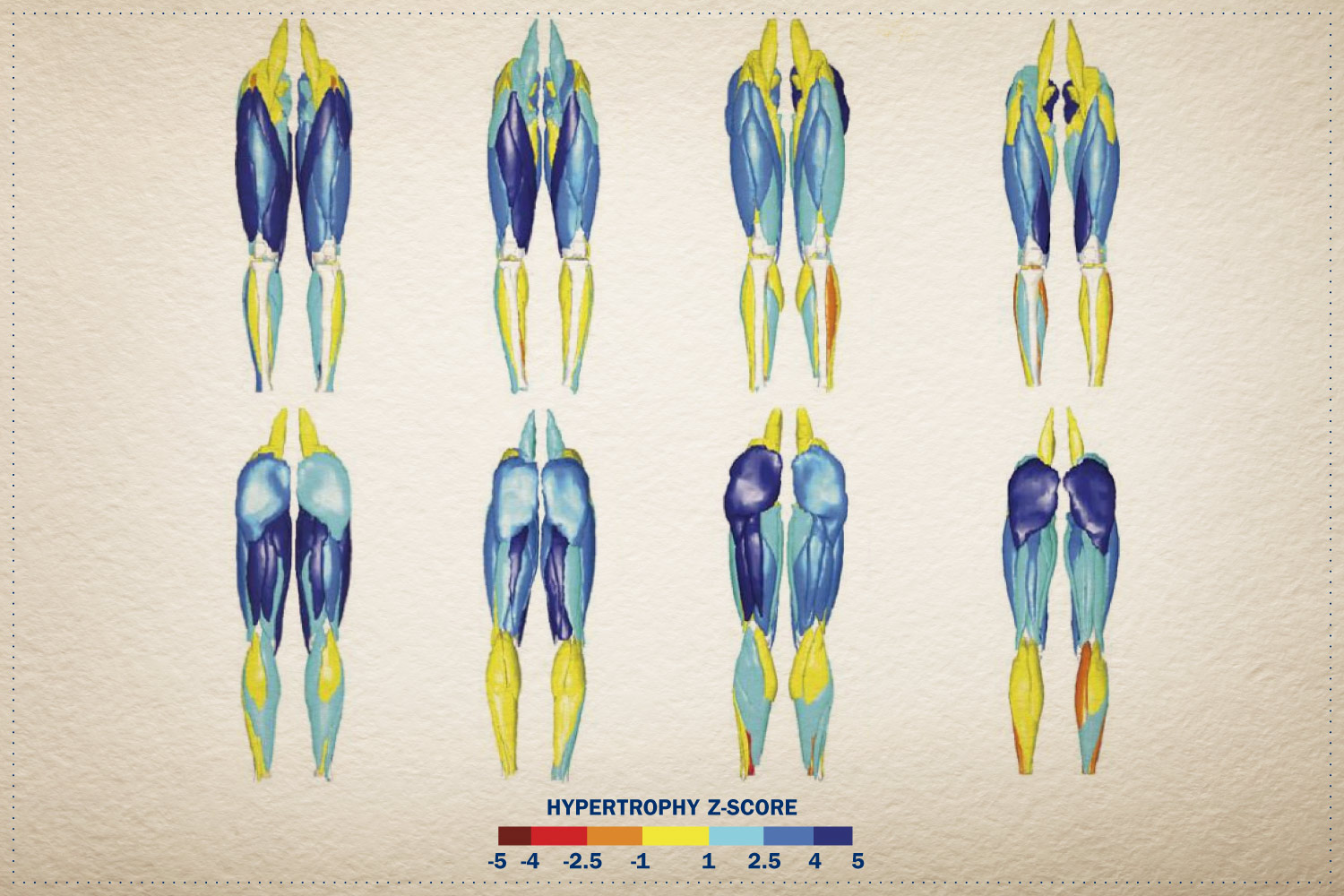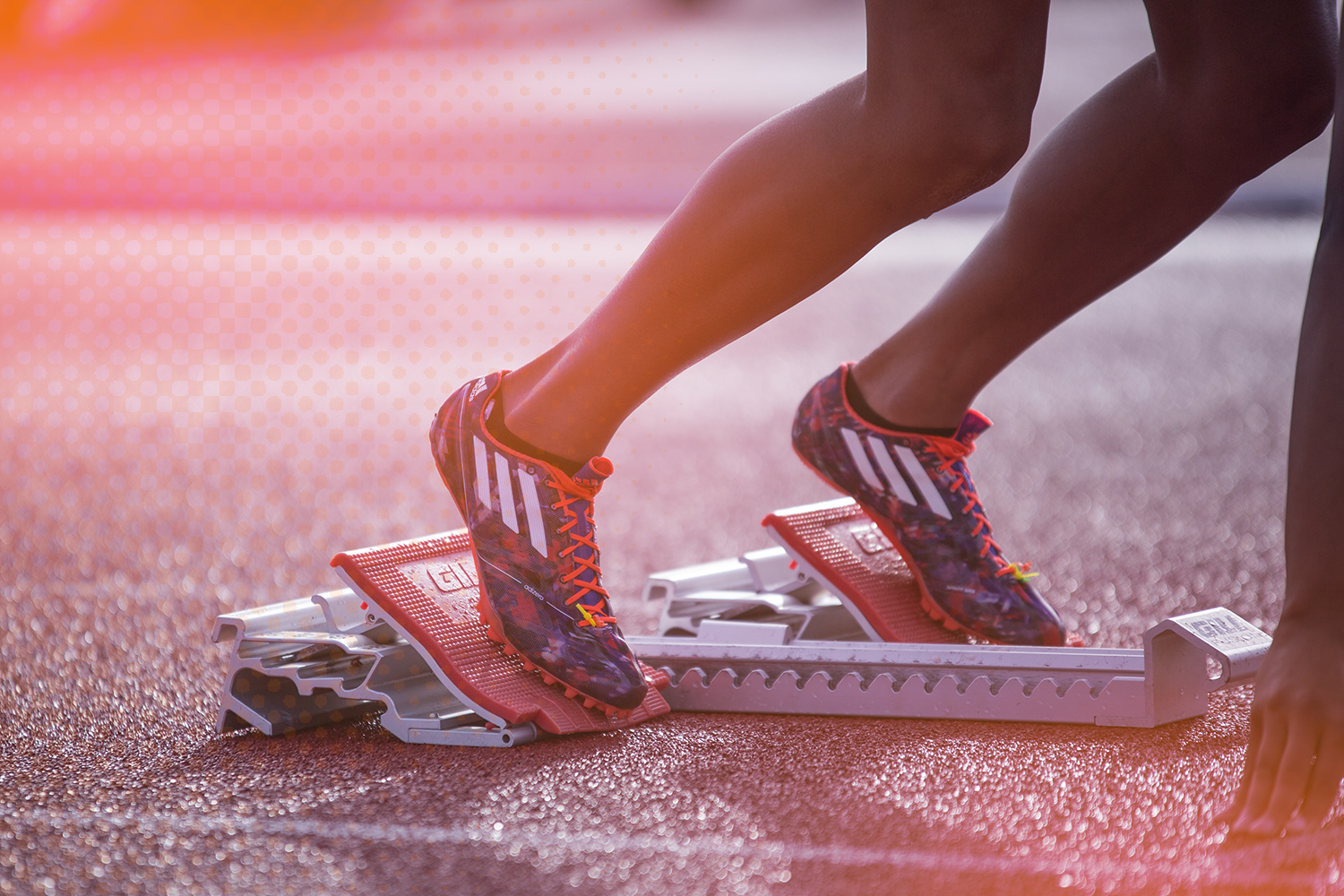As fans around the world have marveled at the athletic feats performed in the 2016 Summer Olympics, University of Virginia biomedical engineer Silvia Blemker and her research team are investigating how differences in musculature can help lead to Olympic gold.
In her latest academic publication, “Adding Muscle Where You Need It: Non-Uniform Hypertrophy Patterns in Elite Sprinters,” published in the Scandinavian Journal of Medicine and Science in Sports, Blemker analyzes the size differences between the muscles of elite sprinters and non-sprinters.
Blemker and her co-authors – including Craig Meyer, a UVA professor of biomedical engineering and radiology; Geoffrey Handsfield and Nic Fiorentino, both Ph.D. graduates from the School of Engineering and Applied Science; Katie Knaus, a graduate student in biomedical engineering; and Joe Hart, an associate professor of kinesiology in the Curry School of Education – used a type of magnetic resonance imaging to measure muscle sizes in 15 NCAA Division I sprinters, which they then compared to the muscles of non-sprinters.
The researchers found that while the elite sprinters’ muscles were larger than those of non-sprinters, the size differences were very high in some muscles – particularly certain hip- and knee-crossing muscles – while other muscles were either average or even below-average – in particular the ankle-crossing muscles.
These results suggest that bigger is not always better; rather, high-performing sprinters have highly specialized patterns of muscle development across their legs that are specifically advantageous for running fast.
Q. What interested you in this subject?
A. I have been fascinated by muscle form and function for my entire career. I’ve spent much of my time studying either healthy or diseased muscle (for example in Duchenne muscular dystrophy), but a few years back, my colleagues, students and I got interested in studying the opposite end of the spectrum: what do super-performing muscles and bodies look like? This gives us a unique avenue into investigating how muscle health influences human performance.
Q. Can you describe in graphic terms what sprinters’ muscles look like, compared to those of the average person?
A. We developed a highly visual method for illustrating the “patterns” of muscle hypertrophy for each athlete.

In this figure, blue muscles are very large, yellow are “average” and red are small, as compared to a healthy non-athlete control database (while accounting for height and mass). We find this visualization to be highly effective for communicating our results with trainers, doctors, coaches and athletes.
Q. Are there individual people who are “born to run” – people with the elite musculature already in place, and with some training, practice and discipline, are geared to go faster than average?
A. This is a fantastic million-dollar question! Yes, I believe that genetics plays a role in speed, as it can many things that are important for running, including natural coordination, muscle fiber properties (including fiber type) and composition, musculoskeletal geometry, and likely other factors as well. However, our data indicates that muscle size/strength – a factor that can be developed through training – is also an important factor.
Q. What can most people do to add muscle for health and performance?
A. One important outcome of our study is that simply adding mass to all leg muscles is likely not beneficial: only certain muscles should be strengthened to gain speed, while other muscles should likely remain smaller (to minimize mass).
Q. Do you have any suggestions for athletes, how they might train to build on their assets and minimize the chance of injury?
A. In addition to finding that not all muscles are big in sprinters, we also found that not all sprinters’ legs look the same. I believe that each sprinter should have a uniquely defined training regimen that is tailored to her/his specific muscle profile.
Q. What’s next in your research? Do you think this kind of research can be helpful in training or developing elite athletes or play some other role?
A. Together with my colleagues Craig Meyer and Joe Hart, we have started a company called Springbok, which is translating this technology to be used by professional sports teams. We are using the technology for guiding training as well as new methods for assessing injury risk and making return-to-sport decisions.
Q. Have you been watching the sprinters in the Olympics? Can you say you’re seeing in action what you’ve seen in the lab?
A. Yes! I am fascinated by the form of all sprinters (and other athletes). In general, we see the same muscle “phenotype” as you see in the Olympic sprinters: small calves, large thighs. However, our data shows that only certain muscles of the thigh and hip are hypertrophied and you cannot see that by looking at the outside of the legs. I’d love to have the opportunity to study Olympic sprinters’ legs some day!
Media Contact
Article Information
August 19, 2016
/content/study-knees-hips-not-ankles-power-fastest-olympic-sprinters

